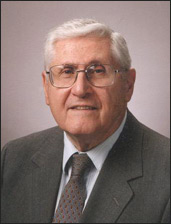William Kannel
Year: February 23rd, 2002
Location: Palm Beach, Florida
Interviewed by: Blackburn, Henry
Abstract
This goes with the classics. It’s basic Framingham, Dawber, politics with Bethesda, the early excitement in the field, and very much about the brilliance of Framingham direction: their choices, principles, courage, enterprise, industry, wise publication policy, and relevance to clinical medicine. There are many anecdotes and background and relationship issues, as with Berliner, Zukel, Feinstein, Castelli, Rutstein, Cooper, Stallones, and Stamler. The institutional egocentricity of Framingham comes through, but the remarkable accomplishments and strategies “justify” it. (Henry Blackburn)
Quotes
So we had then, what I think are the bare-bones of a population-based, epidemiologic study, which we then began to pursue. But then came the big problem and that was how do you study 80 variables on 5,123 people every two years for 20 years and keep track of these data when you had no electronic calculators, no copy machines (always carbon paper), no machines to count and sort. I remember the first machine we had for counting and sorting used cards and it was as big as a piano. It took eight hours to do what a computer could do in several seconds.
I think even Fredrickson confided to me that he felt that trying to shut down Framingham was one of the major mistakes the NIH ever made. He didn’t elaborate. I don’t know whether it was because of the flack they got or whether conceptually it was a bad idea.
Tavia and I came to the Council on Epidemiology and said, “Here we’ve got a risk profile cross-classified by HDL and LDL and total cholesterol.” Stamler said, “That’s much too complicated. We don’t want to have anything to do with that because we’re having trouble getting doctors to understand the standard stuff.” That was a good 8-10 years before the final recognition. So the Council could have gotten in on that.
You and I were the younger members [of the AHA Pooling Project], and I was beginning to notice that I’d try and say something, when they decided, “By golly we’re going to use diastolic pressure.” I said, “You know we’ve got some data about systolic” and nobody paid any attention. And I finally said, “OK, guys.” And I just left and never came back and nobody missed me for two days. Then I rejoined them. So it was apparent that they weren’t going to listen. I said to myself most of the data was Framingham data, so what-the-hell, let it go. And it did.
On the grounds that, as we’re seeing over the years, the average value of risk factors at which events are occurring, keeps going down. Coronary events are occurring at lower pressures these days than they did formerly, and lower lipid values than they did formerly, and so on. Now, that being the case, it would imply that if you treated everybody, the number needed to treat to prevent one case would be increasingly large. Therefore, we said, “Do you need a rifle rather than a shotgun to sort of target the ones who really need aggressive drug therapy while the rest can be given hygienic advisement – weight loss, let’s say, things like this?” So we’ve been pushing this idea.
You have to point out that, in fact, clues to pathogenesis are frequently found in epidemiologic studies. We don’t prove anything. But we can tell people where to look.
Full Transcript Access
Full transcripts of interviews may be made available to those engaged with original materials for scholarly studies by contacting us.
